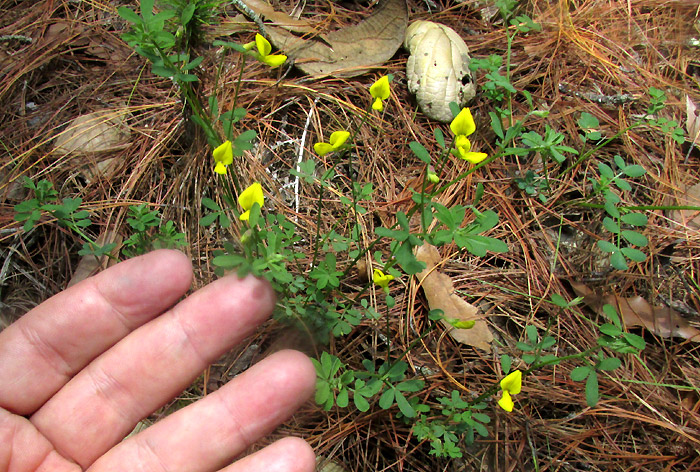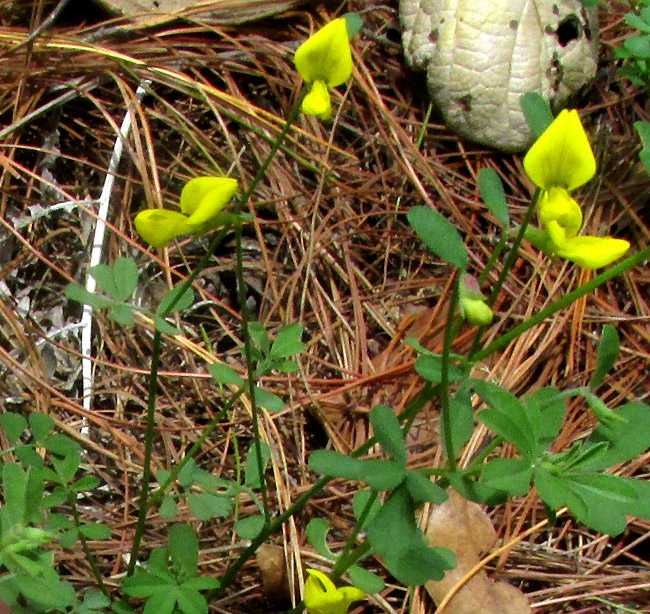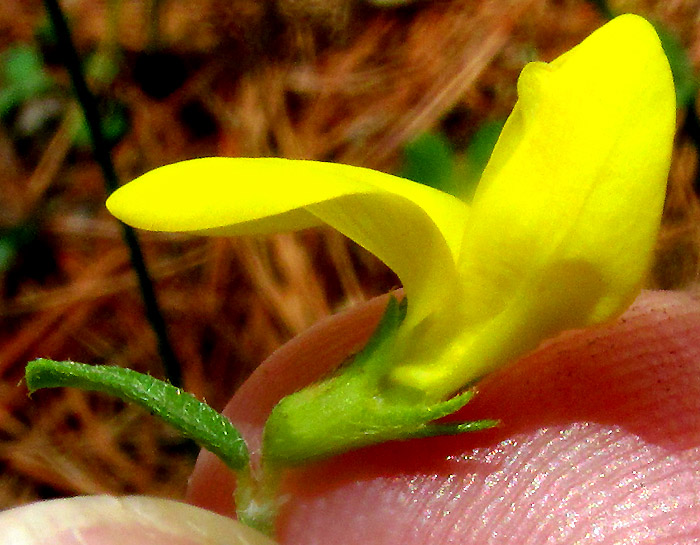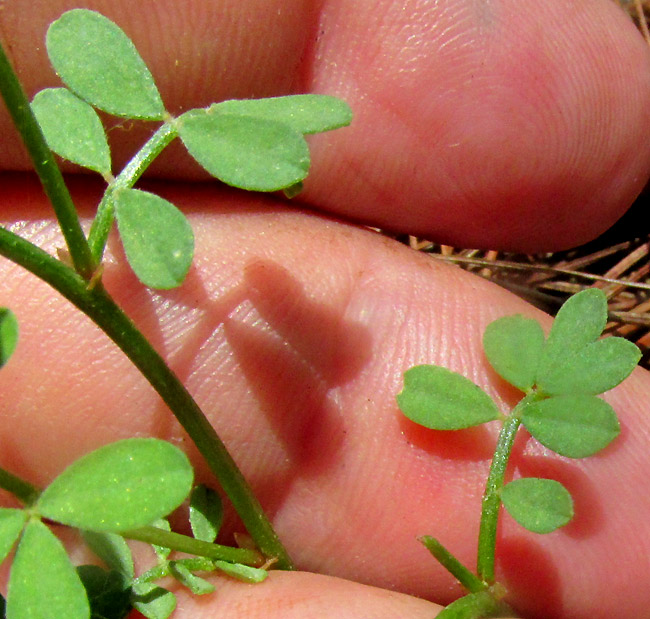Excerpts from Jim Conrad's
Naturalist Newsletter
Entry from field notes dated September 2, 2023, taken in Los Mármoles National Park in the Eastern Sierra Madre mountains, Hidalgo state, MÉXICO; oak-pine forested slope about 3km west of Puerto de Piedra, on road branched off the road between Trancas {on maps designated "Morelos (Trancas)"} and Nicolás Flores; limestone bedrock; elevation ~2,650m (~8,700ft); N20.816°, W99.213°
DEERVETCH

With its compound leaves and strongly bilaterally symmetrical flowers, at first glance the above looks like any number of similar looking, yellow flowered members of the huge Bean Family, the Fabaceae. However, this plant displays some interesting features. First, it's in a forest at the very peak of a mountain often enshrouded in clouds; second, the much-branched plant's stems lie on the ground, and; third, its flowers are arranged not in inflorescences but singly on unusually tall, stiffly erect peduncles, better seen below:

The flowers' tall stalks are peduncles, not pedicels, because of what's seen below:

The flower's green calyx is attached to very short pedicel, below which appears a node with a leafy bract. The tall stalk below the bract is a peduncle. These hair-splitting details mean a lot when dealing with many look-alike species. Otherwise, the flower's calyx and corolla couldn't be more typical of the Bean Family subfamily producing bilaterally symmetrical, papilionaceous flowers. The above flower is papilionaceous because, of its five petals, the top one, or standard, is set apart; there are two side petals, the wings, and; mostly hidden by the wings, two bottom petals fused along their common margin to form a scoop-shape keel. Only the keel's tip is seen emerging from behind a wing.

The small, pinnately compound leaves mostly bear five to seven leaflets. In the above picture's top, left corner, note that at the petiole's base there's a pair of triangular, sharply tipped stipules, with a flower's peduncle arising between them. Stipule form and shape vary tremendously.
The above features, especially the single, yellow flower atop its long, erect peduncle, lead to HOSACKIA REPENS, with no common English name. However, species in the genus Hosackia and the look-alike genus Lotus often are named deervetches. The species occurs in highland oak-pine and fir forests from northwestern Mexico down through the Western Sierra Madres and upland central Mexico, south into the Guatemala highlands.
Most Mexican literature currently refers to Hosackia repens as Lotus repens. In the year 2000 a molecular phylogenetic study found that Lotus species occurring in the Americas, though looking very much like their Eurasian and African counterparts, actually were closer related to Hosackia species, so Lotus repens became Hosackia repens. The change seems to have been accepted in most of the world, but not here in Mexico. Other genera are in play as well, and one can only guess what name our plant will end up with.
Only one Hosackia species is listed for our upland central Mexican state of Hidalgo, but in mountainous western North America they are more numerous. Among those taxa, flowers often are arranged in clusters, and display various colors, including bi-colored ones.
Our plant appears to be too small and to occur in a too-limited habitat to have a record of uses. The common name deervetch suggests one use, for herbivorous wildlife, and its flowers on such tall peduncles reveals another: as a meal for pollinators. One Hosackia species, Hosackia crassifolia, is encouraged for planting in butterfly and bee gardens.